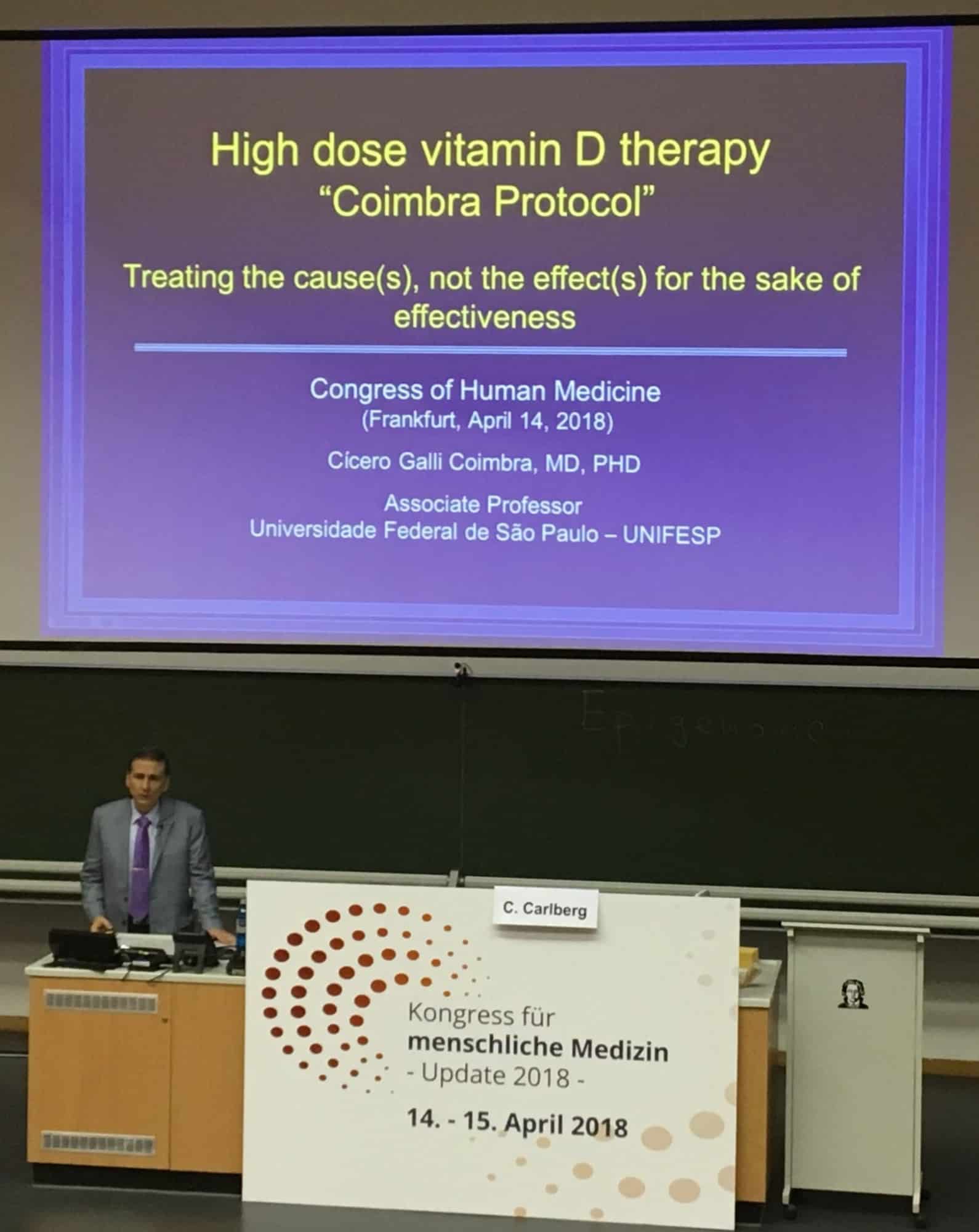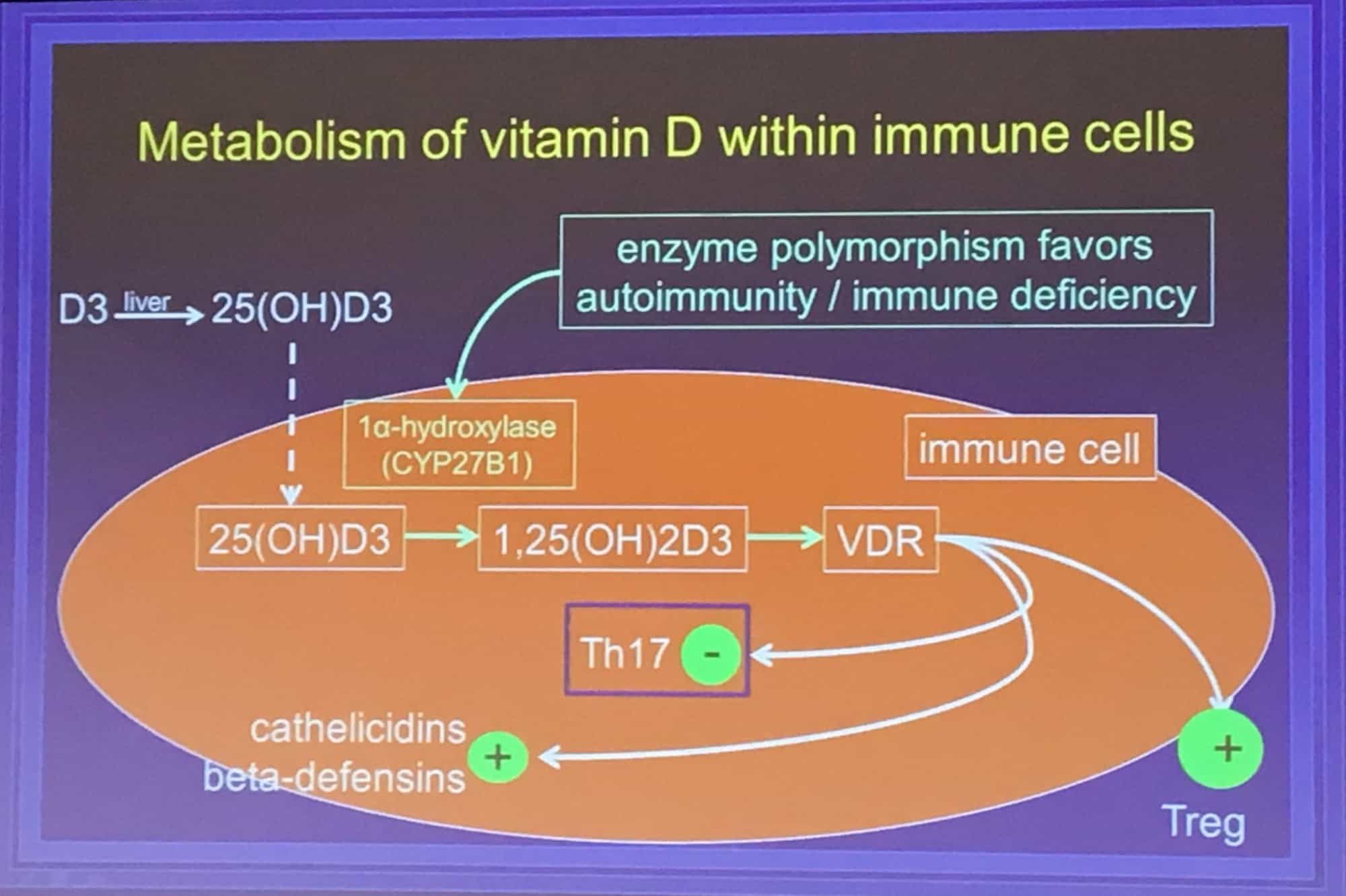High-dose vitamin D therapy according to Prof. Cicero Coimbra
Many people with autoimmune diseases (especially multiple sclerosis) are familiar with Dr. Coimbra’s vitamin D therapy as an approach that is associated with much hope, but also uncertainties.
Dr. Coimbra himself reports that 95% of his patients are completely free of new relapses and that this therapy has also led to a remission of symptoms. (Paralysis, functional disorders, etc., slowly recede, even if the initial onset of these symptoms was long ago)
“Approximately 95% of patients with multiple sclerosis remain in permanent remission under our protocol. While patients receive high-dose vitamin D, the disease remains inactive, without any signs of new lesions – neither clinical nor laboratory-based,” Dr. Coimbra stated in a recently published interview.
During the Congress for Human Medicine in April 2018 in Frankfurt a.M., Dr. Coimbra personally presented his therapeutic approach. Many affected individuals at this congress confirmed this success story during numerous meetings. You can watch a recording of his lecture on the right side.
I had the opportunity to meet Dr. Coimbra during a workshop for therapists and familiarize myself with this therapy.
Very important: This is not a therapy that patients should undertake on their own. High-dose vitamin D therapy must be therapeutically monitored, and several essential measures regarding diagnostics before and during therapy, as well as nutrition and exercise, must be strictly observed. I would be happy to advise you in detail on this therapy, and to accompany and support you.
High-dose Vitamin D Therapy – Indications
According to Dr. Coimbra, this therapy can also be applied to other autoimmune diseases such as:
- Multiple Sclerosis
- Autoimmune Polyneuropathy
- Guillain-Barré Syndrome
- Rheumatoid Arthritis
- Psoriatic Arthritis (and Psoriasis itself)
- Myasthenia Gravis
- Polymyositis
- Systemic Lupus Erythematosus
You can find a detailed and very interesting interview with Dr. Coimbra here.
Development of a New Therapy
The starting point of his discovery was the treatment of patients with vitiligo (white spot disease) and psoriasis. In a study, he observed significant improvements in psoriasis and also repigmentation of the skin of his vitiligo patients under high doses of vitamin D.
Coimbra assumed that patients with autoimmune diseases have a genetically inherited resistance to the effects of vitamin D. This resistance (including a vitamin D receptor disorder) to the immunomodulatory effect of vitamin D is a partial resistance, not a complete one. Due to this predisposition, there is an increased likelihood of developing an autoimmune disease, such as multiple sclerosis.
The more pronounced the resistance, the higher the doses of vitamin D that must be administered to achieve an effect. Therefore, doses of up to 300,000 IU of vitamin D are used here, which are normally considered toxic. Without regular monitoring of specific laboratory values, serious side effects are certainly possible, but avoidable.
High-dose Vitamin D Therapy – the Protocol
The starting point for this vitamin D therapy is a detailed medical history combined with a physical examination. Likewise, various laboratory parameters in blood and urine must be measured at the beginning, which will also be used as comparative parameters for dose adjustment later. Bone density measurement is also necessary before starting therapy.
I will discuss any further sensible diagnostic and therapeutic measures with you, entirely depending on your individual situation.
If all prerequisites are met and there is also a willingness for a few changes in dietary habits and physical activity, therapy can begin. At certain intervals, laboratory values must be checked and a possible dose adjustment made. Initially, these intervals are shorter and are later extended to up to 1 – 2 years. This dose and all accompanying therapeutic measures must then be continued lifelong.
“For a healthy person, I can say without a doubt that 10,000 IU of vitamin D a day will not pose any risk, quite the contrary. For those who suffer from any autoimmune disease, this dose will provide partial relief, but will not eliminate the problem. Higher doses can be used, as long as this supplementation is done under medical supervision.” (Dr. Cicero G. Coimbra)


